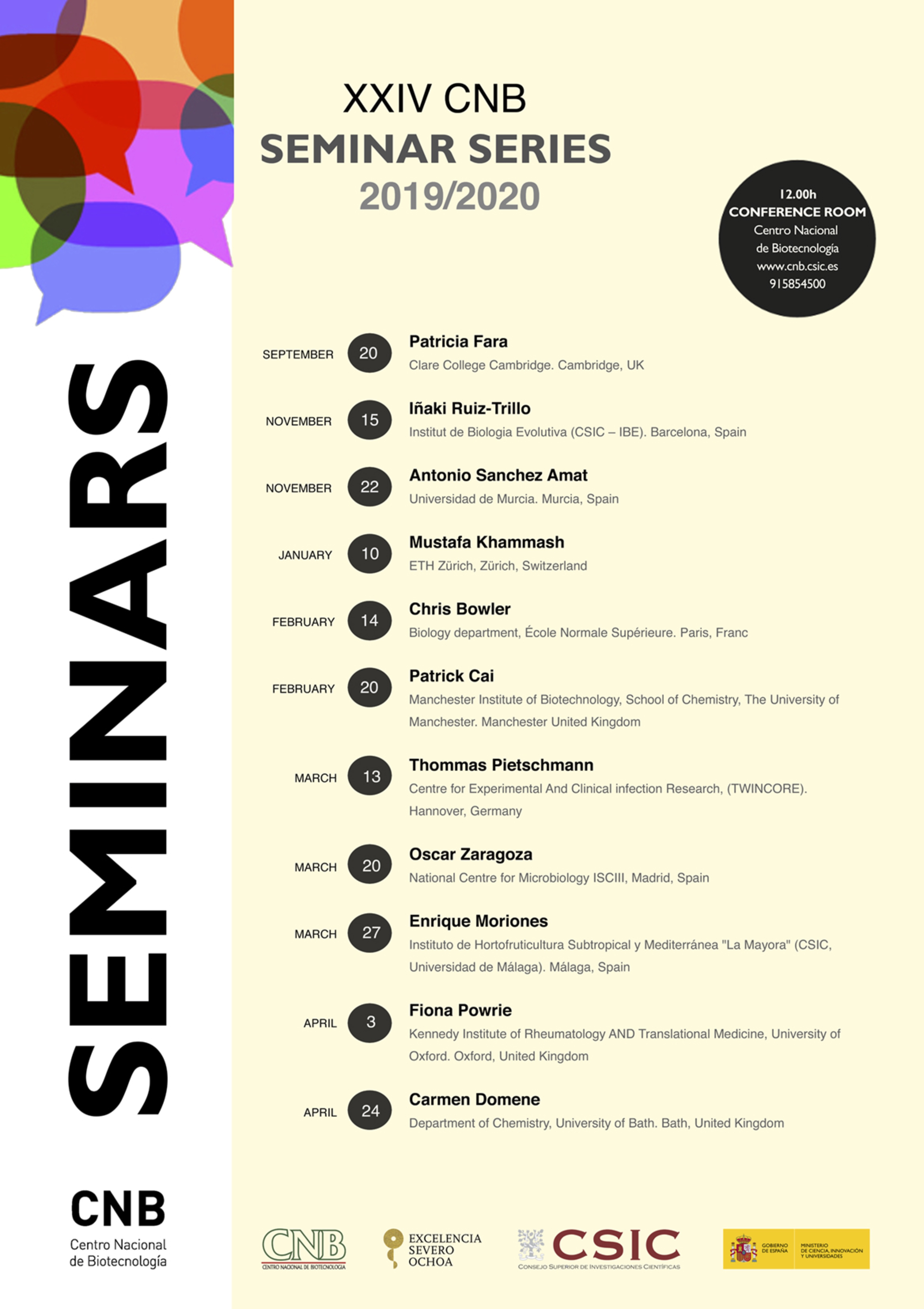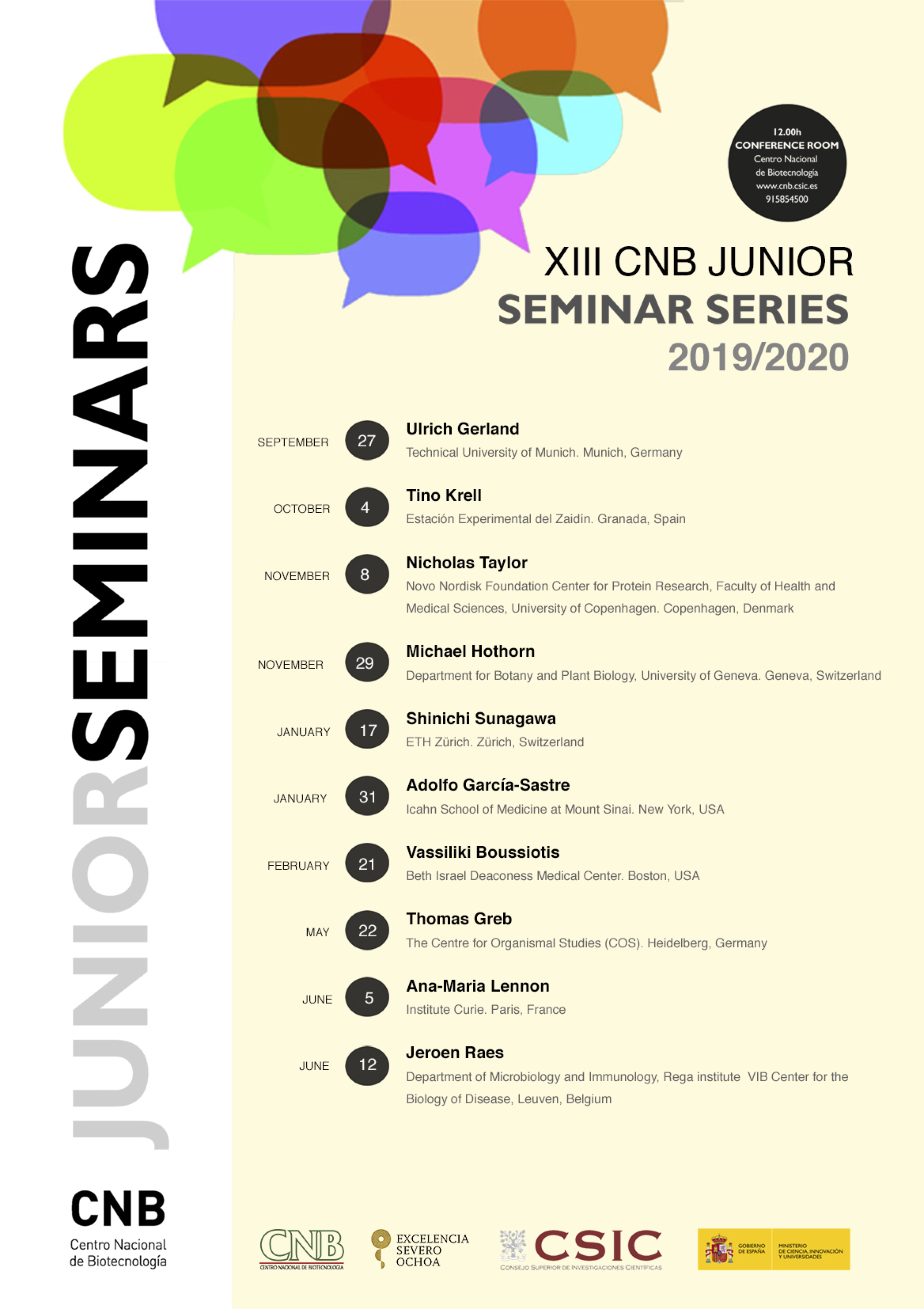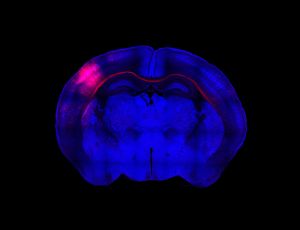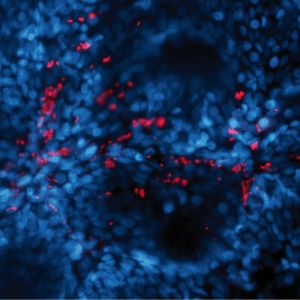Nature Communications volume 10, Article number: 4549 (2019)
S. De León Reyes, S. Mederos, I. Varela, L. A. Weiss, G. Perea, M. J. Galazo & M. Nieto
Abstract
Interhemispheric axons of the corpus callosum (CC) facilitate the higher order functions of the cerebral cortex. According to current views, callosal and non-callosal fates are determined early after a neuron’s birth, and certain populations, such as cortical layer (L) 4 excitatory neurons of the primary somatosensory (S1) barrel, project only ipsilaterally. Using a novel axonal-retrotracing strategy and GFP-targeted visualization of Rorb+ neurons, we instead demonstrate that L4 neurons develop transient interhemispheric axons. Locally restricted L4 connectivity emerges when exuberant contralateral axons are refined in an area- and layer-specific manner during postnatal development. Surgical and genetic interventions of sensory circuits demonstrate that refinement rates depend on distinct inputs from sensory-specific thalamic nuclei. Reductions in input-dependent refinement result in mature functional interhemispheric hyperconnectivity, demonstrating the plasticity and bona fide callosal potential of L4 neurons. Thus, L4 neurons discard alternative interhemispheric circuits as instructed by thalamic input. This may ensure optimal wiring.
DOI 10.1038/s41467-019-12495-w
- Investigadoras del CNB identifican mecanismos que generan conexiones inesperadas ante alteraciones en el desarrollo del individuo.
- Las neuronas de la corteza tienen la capacidad de generar circuitos alternativos con nuevas funciones optimizadas ante situaciones adversas o carencias de estímulos
- El trabajo aporta una nueva perspectiva para comprender la diversidad de circuitos y comportamientos, un factor muy importante para el manejo y el tratamiento de síndromes como el espectro autista.
Front Plant Sci. 2019 Sep 5;10:1044. eCollection 2019.
Contreras R, Kallemi P, González-García MP, Lazarova A, Sánchez-Serrano JJ, Sanmartín M, Rojo E.
Abstract
The transition of stem cells from self-renewal into differentiation is tightly regulated to assure proper development of the organism. Arabidopsis MINIYO (IYO) and its mammalian orthologue RNA polymerase II associated protein 1 (RPAP1) are essential factors for initiating stem cell differentiation in plants and animals. Moreover, there is evidence suggesting that the translocation of IYO and RPAP1 from the cytosol into the nucleus functions as a molecular switch to initiate this cell fate transition. Identifying the determinants of IYO subcellular localization would allow testing if, indeed, nuclear IYO migration triggers cell differentiation and could provide tools to control this crucial developmental transition. Through transient and stable expression assays in Nicotiana benthamiana and Arabidopsis thaliana, we demonstrate that IYO contains two nuclear localization signals (NLSs), located at the N- and C-terminus of the protein, which mediate the interaction with the NLS-receptor IMPA4 and the import of the protein into the nucleus. Interestingly, IYO also interacts with GPN GTPases, which are involved in selective nuclear import of RNA polymerase II. This interaction is prevented when the G1 motif in GPN1 is mutated, suggesting that IYO binds specifically to the nucleotide-bound form of GPN1. In contrast, deleting the NLSs in IYO does not prevent the interaction with GPN1, but it interferes with import of GPN1 into the nucleus, indicating that IYO and GPN1 are co-transported as a complex that requires the IYO NLSs for import. This work unveils key domains and factors involved in IYO nuclear import, which may prove instrumental to determine how IYO and RPAP1 control stem cell differentiation.
doi: 10.3389/fpls.2019.01044.
Sachse M, Fernández de Castro I, Tenorio R, Risco C.
Abstract
Transmission electron microscopy (TEM) has been crucial to study viral infections. As a result of recent advances in light and electron microscopy, we are starting to be aware of the variety of structures that viruses assemble inside cells. Viruses often remodel cellular compartments to build their replication factories. Remarkably, viruses are also able to induce new membranes and new organelles. Here we revise the most relevant imaging technologies to study the biogenesis of viral replication organelles. Live cell microscopy, correlative light and electron microscopy, cryo-TEM, and three-dimensional imaging methods are unveiling how viruses manipulate cell organization. In particular, methods for molecular mapping in situ in two and three dimensions are revealing how macromolecular complexes build functional replication complexes inside infected cells. The combination of all these imaging approaches is uncovering the viral life cycle events with a detail never seen before.
doi: 10.1016/bs.aivir.2019.07.005.
PLoS Comput Biol. 2019 Sep 17;15(9):e1007353.
Chagoyen M, Poyatos JF.
Abstract
Environmental or genetic perturbations lead to gene expression changes. While most analyses of these changes emphasize the presence of qualitative differences on just a few genes, we now know that changes are widespread. This large-scale variation has been linked to the exclusive influence of a global transcriptional program determined by the new physiological state of the cell. However, given the sophistication of eukaryotic regulation, we expect to have a complex architecture of specific control affecting this program. Here, we examine this architecture. Using data of Saccharomyces cerevisiae expression in different nutrient conditions, we first propose a five-sector genome partition, which integrates earlier models of resource allocation, as a framework to examine the deviations from the global control. In this scheme, we recognize invariant genes, whose regulation is dominated by physiology, specific genes, which substantially depart from it, and two additional classes that contain the frequently assumed growth-dependent genes. Whereas the invariant class shows a considerable absence of specific regulation, the rest is enriched by regulation at the level of transcription factors (TFs) and epigenetic modulators. We nevertheless find markedly different strategies in how these classes deviate. On the one hand, there are TFs that act in a unique way between partition constituents, and on the other, the action of chromatin modifiers is significantly diverse. The balance between regulatory strategies ultimately modulates the action of the general transcription machinery and therefore limits the possibility of establishing a unifying program of expression change at a genomic scale.
doi: 10.1371/journal.pcbi.1007353
- La infección por la bacteria E. coli enterohemorrágica (EHEC) se transmite por alimentos contaminados produciendo colitis hemorrágicas, anemia hemolítica e insuficiencia renal, lo que puede llegar a causar graves secuelas y la muerte.
- No existe en la actualidad vacuna o una terapia eficiente, pero investigadores del CSIC han encontrado una novedosa estrategia que puede bloquear la infección.
La bacteria E. coli enterohemorrágica (EHEC) se encuentra a menudo presente en el intestino del ganado bovino sin causar síntomas, pero desde estos animales puede llegar a contaminar alimentos (p.ej. carne picada, vegetales, zumos) si no se toman las medidas sanitarias adecuadas durante su elaboración. Tras la ingestión de alimentos contaminados EHEC infecta el colon humano y produce toxinas que causan colitis hemorrágica, anemia hemolítica e insuficiencia renal, lo que puede generar graves efectos secundarios e incluso la muerte. Estas infecciones suponen un riesgo para la salud pública ya que no existe vacuna ni una terapia efectiva frente a EHEC, ya que el uso de antibióticos puede inducir una mayor liberación de toxinas.
The new annual cycle of Seminars will start next Friday 20th of September with the inaugural talk from Patricia Fara, director at the History and Philosophy of Science Department at Clare College, University of Cambridge.
Seminars will take place Friday at 12:00 in the Main Lecture hall of the institute


Ayer se celebró en Madrid la entrega de las acreditaciones Severo Ochoa y María de Maeztu. Pedro Duque, ministro en funciones de Ciencia, Innovación y Universidades entregó las distinciones a los centros y unidades elegidos, que destacan por su alta competitividad, sus ambiciosos planes estratégicos, una producción científica de máxima calidad y una gran capacidad para atraer talento nacional e internacional.
Para el CNB, esta es la segunda acreditación Severo Ochoa tras la recibida en el año 2013. Fernando Rojo, director del centro, destacó en la ceremonia como la acreditación Severo Ochoa ha supuesto un cambio importante para el CNB, promoviendo la realización de un plan estratégico del centro a medio y largo plazo donde se han identificado las fortalezas del centro de cara a garantizar la calidad, excelencia y el impacto de nuestra investigación en el futuro.
PLoS Pathog. 2019 Aug 29;15(8):e1008031.
Ruano-Gallego D, Yara DA, Di Ianni L, Frankel G, Schüller S, Fernández LA.
Abstract
Enterohemorrhagic E. coli (EHEC) is a human intestinal pathogen that causes hemorrhagic colitis and hemolytic uremic syndrome. No vaccines or specific therapies are currently available to prevent or treat these infections. EHEC tightly attaches to the intestinal epithelium by injecting the intimin receptor Tir into the host cell via a type III secretion system (T3SS). In this project, we identified a camelid single domain antibody (nanobody), named TD4, that recognizes a conserved Tir epitope overlapping the binding site of its natural ligand intimin with high affinity and stability. We show that TD4 inhibits attachment of EHEC to cultured human HeLa cells by preventing Tir clustering by intimin, activation of downstream actin polymerization and pedestal formation. Furthermore, we demonstrate that TD4 significantly reduces EHEC adherence to human colonic mucosa in in vitro organ cultures. Altogether, these results suggest that nanobody-based therapies hold potential in the development of much needed treatment and prevention strategies against EHEC infection.
doi: 10.1371/journal.ppat.1008031.
MBio. 2019 Aug 27;10(4). pii: e01839-19.
DeDiego ML, Nogales A, Martinez-Sobrido L, Topham DJ.
Abstract
Using multiple viral systems, and performing silencing approaches, overexpression approaches, and experiments in knockout cells, we report, for the first time, that interferon (IFN)-induced protein 44 (IFI44) positively affects virus production and negatively modulates innate immune responses induced after viral infections. Moreover, IFI44 is able to rescue poly(I·C)- and IFN-mediated inhibition of virus growth. Furthermore, we report a novel interaction of IFI44 with the cellular factor FK506-binding protein 5 (FKBP5), which binds to cellular kinases such as the inhibitor of nuclear factor kappa B (IκB) kinases (IKKα, IKKβ, and IKKε). Importantly, in the presence of FKBP5, IFI44 decreases the ability of IKKβ to phosphorylate IκBα and the ability of IKKε to phosphorylate interferon regulatory factor 3 (IRF-3), providing a novel mechanism for the function of IFI44 in negatively modulating IFN responses. Remarkably, these new IFI44 functions may have implications for diseases associated with excessive immune signaling and for controlling virus infections mediated by IFN responses.IMPORTANCE Innate immune responses mediated by IFN and inflammatory cytokines are critical for controlling virus replication. Nevertheless, exacerbated innate immune responses could be detrimental for the host and feedback mechanisms are needed to maintain the cellular homeostasis. In this work, we describe a completely novel function for IFI44 in negatively modulating the innate immune responses induced after viral infections. We show that decreasing IFI44 expression by using small interfering RNAs (siRNAs) or by generating knockout (KO) cells impairs virus production and increases the levels of IFN responses. Moreover, we report a novel interaction of IFI44 with the cellular protein FKBP5, which in turn interacts with kinases essential for type I and III IFN induction and signaling, such as the inhibitor of nuclear factor kappa B (IκB) kinases IKKα, IKKβ, and IKKε. Our data indicate that binding of IFI44 to FKBP5 decreased the phosphorylation of IRF-3 and IκBα mediated by IKKε and IKKβ, respectively, providing a likely explanation for the function of IFI44 in negatively modulating IFN responses. These results provide new insights into the induction of innate immune responses and suggest that IFI44 is a new potential antiviral target for reducing virus replication.
doi: 10.1128/mBio.01839-19.
COOKIES POLICY
A cookie is a text file that is stored on your computer or mobile device via a web server and only that server will be able to retrieve or read the contents of the cookie and allow the Web site remember browser preferences and navigate efficiently. Cookies make the interaction between the user and the website faster and easier.
General information
This Website uses cookies. Cookies are small text files generated by the web pages you visit, which contain the session data that can be useful later in the website. In this way this Web remembers information about your visit, which can facilitate your next visit and make the website more useful.
How do cookies?
Cookies can only store text, usually always anonymous and encrypted. No personal information is ever stored in a cookie, or can be associated with identified or identifiable person.
The data allow this website to keep your information between the pages, and also to discuss how to interact with the website. Cookies are safe because they can only store information that is put there by the browser, which is information the user entered in the browser or included in the page request. You can not run the code and can not be used to access your computer. If a website encrypts cookie data, only the website can read the information.
What types of cookies used?
The cookies used by this website can be distinguished by the following criteria:
1. Types of cookies as the entity that manages:
Depending on who the entity operating the computer or domain where cookies are sent and treat the data obtained, we can distinguish:
- Own cookies: are those that are sent to the user's terminal equipment from a computer or domain managed by the editor itself and from which provides the service requested by the user.
- Third party cookies: these are those that are sent to the user's terminal equipment from a machine or domain that is not managed by the publisher, but by another entity data is obtained through cookies.
In the event that the cookies are installed from a computer or domain managed by the editor itself but the information collected by these is managed by a third party can not be considered as party cookies.
2. Types of cookies as the length of time that remain active:
Depending on the length of time that remain active in the terminal equipment can be distinguished:
- Session cookies: cookies are a type designed to collect and store data while the user accesses a web page. Are usually used to store information that only worth preserving for the service requested by the user at any one time (eg a list of products purchased).
- Persistent cookies: cookies are a type of data which are stored in the terminal and can be accessed and treated for a period defined by the head of the cookie, and can range from a few minutes to several years.
3. Cookies types according to their purpose:
Depending on the purpose for which the data are processed through cookies, we can distinguish between:
- Technical cookies: these are those that allow the user to navigate through a web page or application platform and the use of different options or services it exist as, for example, control traffic and data communication, identify the session, access to restricted access parts, remember the elements of an order, make the buying process an order, make an application for registration or participation in an event, use security features while browsing store content for dissemination videos or sound or share content via social networks.
- Customization cookies: these are those that allow the user to access the service with some general characteristics based on a predefined set of criteria in the user terminal would eg language, the type of browser through which you access the service, the locale from which you access the service, etc.
- Analysis cookies: they are those that allow the responsible for them, monitoring and analyzing the behavior of users of the web sites that are linked. The information gathered through such cookies are used in measuring the activity of web sites, application or platform and for the profiling of user navigation of such sites, applications and platforms, in order to make improvements function data analysis how users use the service.
Management tool cookies
This Website uses Google Analytics.
Google Analytics is a free tool from Google that primarily allows website owners know how users interact with your website. Also, enable cookies in the domain of the site in which you are and uses a set of cookies called "__utma" and "__utmz" to collect information anonymously and reporting of website trends without identifying individual users..
For statistics of use of this website use cookies in order to know the level of recurrence of our visitors and more interesting content. This way we can concentrate our efforts on improving the most visited areas and make the user more easily find what they are looking for. On this site you can use the information from your visit for statistical evaluations and calculations anonymous data and to ensure the continuity of service or to make improvements to their websites. For more details, see the link below privacy policy [http://www.google.com/intl/en/policies/privacy/]
How to manage cookies on your computer: disabling and deleting cookies
All Internet browsers allow you to limit the behavior of a cookie or disable cookies within settings or browser settings. The steps for doing so are different for each browser, you can find instructions in the help menu of your browser.
If you decline the use of cookies, since it is possible thanks to the preferences menu of your browser or settings, reject, this website will continue to function properly without the use of the same.
Can you allow, block or delete cookies installed on your computer by setting your browser options installed on your computer:
- For more information about Internet Explorer click here.
- For more information on Chrome click here.
- For more information about Safari click here.
- For more information about Firefox click here.
Through your browser, you can also view the cookies that are on your computer, and delete them as you see fit. Cookies are text files, you can open and read the contents. The data within them is almost always encrypted with a numeric key corresponding to an Internet session so often has no meaning beyond the website who wrote it.
Informed consent
The use of this website on the other hand, implies that you paid your specific consent to the use of cookies, on the terms and conditions provided in this Cookies Policy, without prejudice to the measures of deactivation and removal of cookies that you can take, and mentioned in the previous section.








